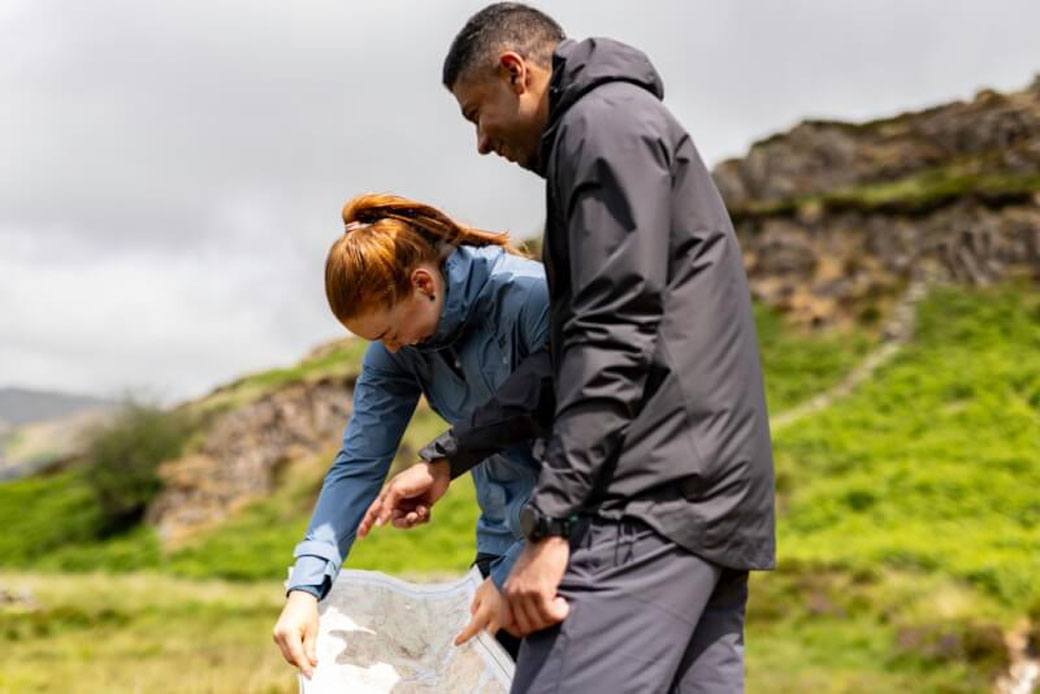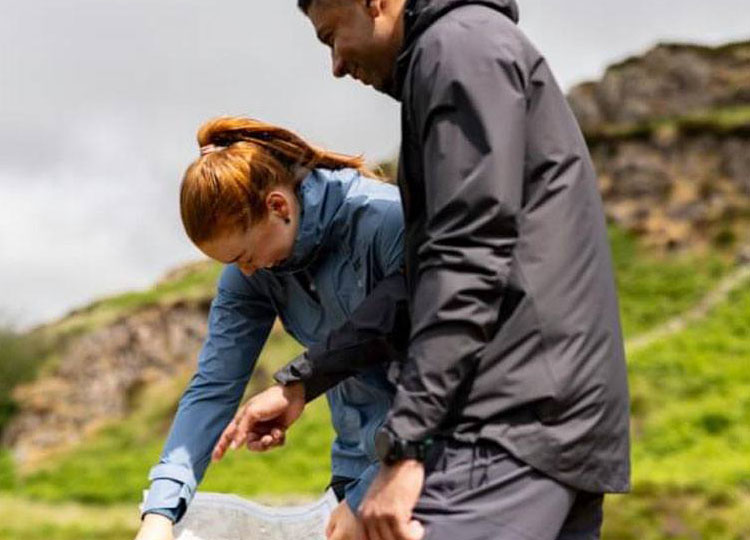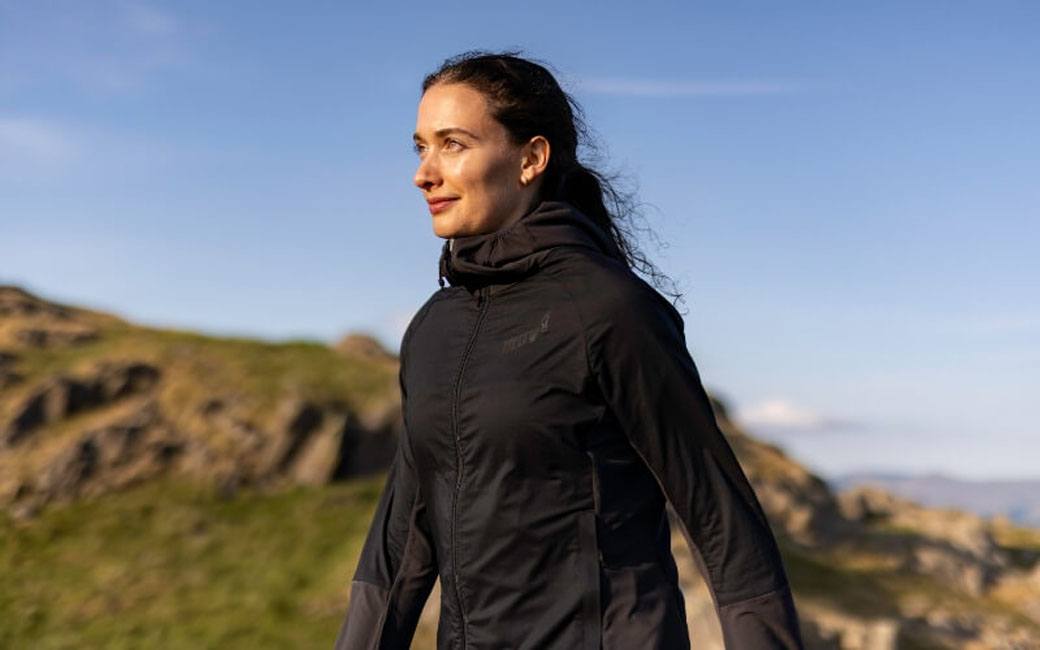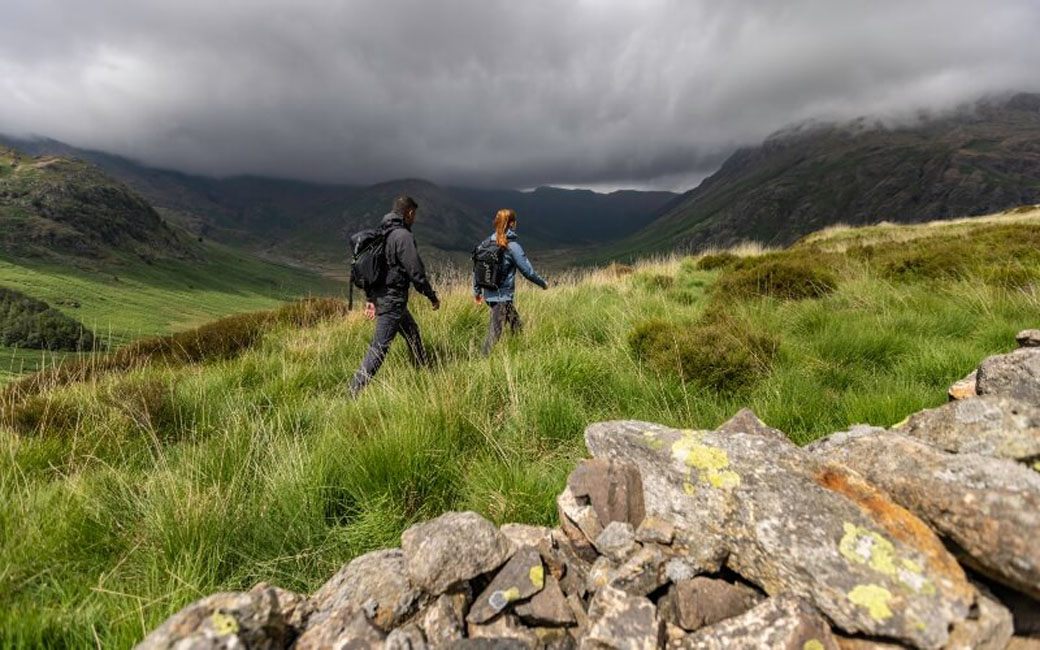
The research is clear. Walking is good for body and mind. And it’s simple – just one foot in front of the other.
Many adults have fallen out with ‘sport’ because of negative experiences at school, or because they do not feel ‘good enough’. Walking however is simple and accessible. You can do it alone ‘to get away from it all’ or with friends and family, to share the experience. You go as long as you want – you can even do it in short 10-minute bursts and still gain the benefit.
Studies have shown that regular walking:
- Lowers your chance of developing heart disease
- Increases bone density
- Can lower blood pressure
- Helps control blood glucose levels and fight diabetes
Lowers feelings of anxiety and depression, and can help you sleep betterBut how to start? In this complete guide to walking we go through everything you need to know to get started – there’s even a training plan to build you up to walking 10,000 steps in one go.
HOW MUCH IS ENOUGH?
It doesn’t matter whether you want to count steps, track your distance, or measure time. What is important is that you build exercise into your daily routine.
There are plenty of ways of measuring your steps, timings or distances exactly, but based on an estimated average step length, there are about 2,000 steps in 1 mile.
Research shows that for every 2,000 steps you take, the risk of heart disease, cancer and premature death decreases by 10%, peaking at 10,000 steps each day. Additionally, a little under 10,000 steps a day (9,800) can drop the risk of dementia by 50%.
You don’t need to do all your steps in one go! One study has shown that brisk walking, even in short 11-minute bursts gives big health benefits. So, if you can’t walk far, walk more often but at a higher intensity. Your speed, the gradient and the load you are carrying all add to the effort level.
A brisk pace for one person may not be brisk for another, but what matters is the relative effort. At a light exercise intensity, a person can sing a song, while at a moderate intensity, a person can easily carry a conversation but would struggle to sing. At higher intensities, conversation becomes difficult, if not impossible.
KNOW YOUR MOTIVATION
Being clear on why you want to do something goes a long way in making sure you can achieve it. Luckily there are many good reasons to lace up you shoes and head out for a walk, in addition to the obvious health benefits.
The number one reason why people choose to walk is to spend time with family, closely followed by the wish to have fun with friends. Even those of us who do not participate in traditional sport can find a community in the outdoors.
Fresh air, beautiful scenery and connecting with nature are further reasons why walking is such a rewarding past time. It helps us to relax and to get away from many of the stresses of modern life.
Challenge is another great motivator. Many of us thrive on setting a goal and acquiring the skills needed to accomplish it.
There is also motivational value to having a sense of control, so taking a positive step to improve your health can be really empowering.


HOW TO MEASURE YOUR WALKS
Setting yourself a daily target can be a great motivator, and can be the start to a healthier you. Find the right level – something that is a challenge, but achievable within your fitness levels and available time.
Be honest with what is achievable as it can be a tricky balance to not let walking become another stress in your life, where instead of being quality time spent in nature, it becomes a chore.
There are many fitness apps to help you capture and assess your daily exercise levels, many of them free. We will list a couple of our favourites here because they’re free, simple to use and as well as counting your steps, they also help you assess your effort levels.
GOOGLEFIT
GoogleFit is a free step counter app, developed by Google in a collaboration with the American Heart Association.
We mention it here because at its simplest, it counts steps as well as ‘heart points’. You'll earn one heart point for each minute of moderately intense activity, and double points for more intense activities, which ties in well with research on the importance of the right effort levels for the best health benefits.
It can monitor all of your physical activity and lets you set fitness goals by working with the other health apps you have on your phone already.
Cost: Free
ACTIVE 10
The Active 10 app was developed by Public Health England in collaboration with The University of Sheffield, Sheffield Hallam University and the National Centre for Sports and Exercise Medicine.
It tracks all your walking and how many minutes were brisk (10 brisk minutes = Active 10). There is even a Pace Checker to see what brisk walking feels like.
It allows you to set goals to keep motivated and help you progress and lets you discover loads of hints and tips on achieving a healthier lifestyle.
Cost: free
HOW TO BUILD A HABIT
Know your why, what, and how.
Be sure you’re clear on why you want to walk (more). The list of motivations above is extensive. It is worth taking some time over this, as it will help you to keep going. Do you want to improve your heath, conquer a mountain peak, or do you dream of a family walking holiday in the alps?
From that, it will be easy to work out what you need to do to achieve your goal. Be sure to break it down into smaller intermediate goals and celebrate the small wins along the way.
An easy way to build a habit is to surround yourself with others who have the same goals. You could involve family members or friends, which will add a social element to your exercise. Alternatively, join one of the many hiking or walking groups. There are a wide range of community groups throughout the country, waiting to welcome you with open arms. A more experienced friend or a hiking group will help you with any challenges, but even a good fitness tracking app will help you visualise your progress.
If your time is limited, and you simply want to increase your daily step count, you can make small changes to your daily routine, like parking a little further away from your destination and walking the rest. As an example, next time you drive to the supermarket, pick the car park furthest away from the entrance rather than circling until you get a front row spot. Taking stairs instead of the lift or elevator is another good way add in some effort. A brisk walk at lunch time will break up your workday, and a walk or hike is a great chance to catch up with a friend rather than talking on the phone.


JAMES FORREST’S ‘COUCH TO 10,000 STEPS’ TRAINING PLAN
James Forrest is an adventurer, hiker and author who is best known for climbing all 1,001 mountains across the UK and Ireland in the fastest known time. Who better then to provide a training plan to get you to 10,000 steps in a day in just 8 weeks!
James says:
“Before you get started, it might be wise to consult with your doctor or a fitness professional, particularly if you have any underlying health concerns or mobility issues. But, presuming all is well health wise, you’re good to get started.
As with all training programmes, a good mindset is to build things up slowly and set yourself bite-size goals. It’s unlikely you will jump straight from a sedentary lifestyle to 10,000 steps per day with ease. Instead you can maybe target 1,000 or 2,000 steps per day for a few weeks, and increase your goal by a few thousand every week. This will all depend on your health, fitness, dedication levels and, of course, the amount of time you can commit to this challenge.
A good way to get more steps in is to integrate walking into your everyday life, rather than having to find the time for special training hikes. Can you start walking the dogs, or commute to work on foot, or perhaps hike to the supermarket rather than driving? Maybe you can walk the kids to school and back, or walk to the pub rather than take a cab?
While it’s difficult to be prescriptive with a training plan – there is no one-size-fits-all solution – here’s an example as a rough guide.”
Weeks 1 – 2
- Slowly build up to 2,500 steps per day (about 1.4km)
- 5 shorter walks outside every day
- 2 slightly longer walks outside on Saturdays and Sundays
Weeks 3 - 4
- Slowly build up to 5,000 steps per day (about 2.8km)
- 5 shorter walks outside every day
- 2 slightly longer walks outside on Saturdays and Sundays
WEEKS 5 - 6
- Slowly build up to 7,500 steps per day (about 4.2km)
- 5 shorter walks outside every day
- 2 slightly longer walks outside on Saturdays and Sundays
WEEKS 7 - 8
- Slowly build up to 10,000 steps per day (about 5.6km)
- 5 shorter walks outside every day
- 2 slightly longer walks outside on Saturdays and Sundays


WALKING GROUPS & RESOURCES
RAMBLERS
Throughout England, Scotland and Wales, Ramblers works to safeguard the places where people go walking and encourages more people to do so. It offers a range of group walks, from ‘easy access’ walks suitable for people with mobility issues and those pushing wheelchairs and pushchairs, to ‘technical’, which may require scrambling and ropes. There are age-specific groups and non-age-specific groups.
Membership Types:
- Individual (for one adult) £3.42 per month (or £41 per year)
Joint (for two adults) £4.58 per month (or £55 per year)
Check out the free Ramblers Wellbeing Walks: https://www.ramblers.org.uk/go-walking/wellbeing-walks
LDWA (LONG DISTANCE WALKERS ASSOCIATION)
The LDWA is an Association of people with the common interest of walking long distances in rural, mountainous or moorland areas. They are also a governing body for long distance walking recognised by Sport England. Alongside guided group walks and challenge events throughout the country, members also get access to a comprehensive database of long-distance paths, with the ability to download GPX files.
Membership Types:
- Individual (UK) UK residents only - £18.00 (£15.00 with Direct Debit discount)
- Family (UK) UK residents only - £25.50 (£22.50 with Direct Debit discount)
- International With mailed Strider - £26.00. No Strider - £15.00
WALK NI
Your definitive guide to coastal, parkland, urban, riverside and forest trails in Northern Ireland. A range of clubs offering short (up to five miles), medium (five to 20 miles) and long walks (longer than 20 miles), plus an accessible walk scheme for people with mobility issues. Membership costs varies for individual clubs.
PATHS FOR ALL
Paths for all is a Scottish charity that is the champion of everyday walking for a happier, healthier, greener Scotland. They have run short, volunteer-led walks in every local authority in Scotland and have lots of useful information.
WALKING IN ENGLAND
A great resource with a comprehensive list of clubs, free routes and useful information.










